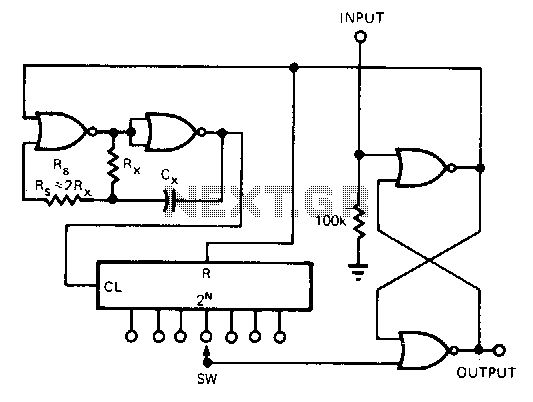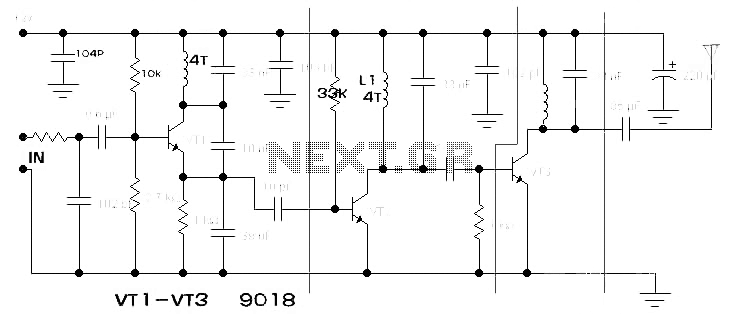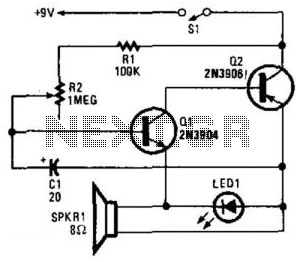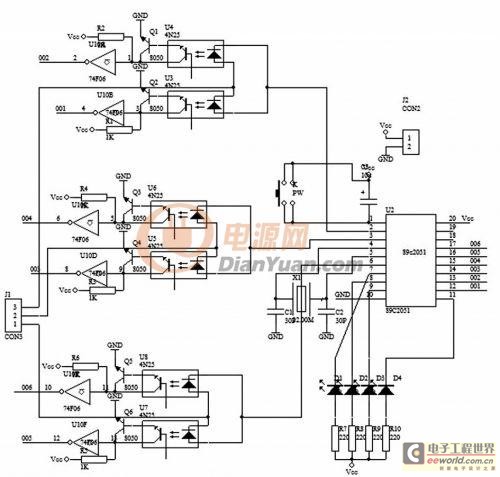
Low-Power Metronome
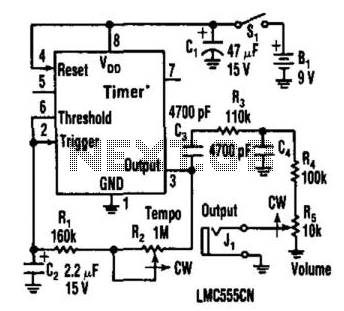
This metronome operates on a current of only 0.25 mA, making it suitable for battery-powered applications. It offers a tempo range from 34 to 246 beats per minute. The circuit can utilize a CMOS timer, such as the LM555 CN or TLC55CP.
The metronome circuit is designed to provide a reliable timing signal with low power consumption, making it an excellent choice for portable devices. The use of a CMOS timer, such as the LM555 CN or TLC55CP, allows for efficient operation and precise timing capabilities.
The LM555 timer can be configured in astable mode to generate a square wave output, which serves as the metronome's ticking sound. The frequency of this output can be adjusted by changing the resistor and capacitor values in the timing circuit, allowing the user to set the desired tempo within the specified range of 34 to 246 beats per minute.
For example, to achieve the lower end of the tempo range, larger capacitor and resistor values can be used, while smaller values will increase the frequency for higher tempos. The output can be connected to an audio transducer, such as a piezo buzzer, to produce an audible tick sound at the selected tempo.
In addition to the basic configuration, incorporating a potentiometer in place of one of the resistors can provide a user-friendly interface for real-time tempo adjustments. The circuit can also include visual indicators, such as LEDs, which could blink in sync with the metronome's beat, providing a visual cue alongside the audible signal.
Overall, this metronome circuit design combines low power consumption with versatility in tempo selection, making it an effective tool for musicians and educators alike. Using only 0.25 mA, this metronome is ideal for battery operation. The tempo range is 34 to 246 beats per minute. Use a CMOS timer, such as an LM555 CN or TLC55CP.
The metronome circuit is designed to provide a reliable timing signal with low power consumption, making it an excellent choice for portable devices. The use of a CMOS timer, such as the LM555 CN or TLC55CP, allows for efficient operation and precise timing capabilities.
The LM555 timer can be configured in astable mode to generate a square wave output, which serves as the metronome's ticking sound. The frequency of this output can be adjusted by changing the resistor and capacitor values in the timing circuit, allowing the user to set the desired tempo within the specified range of 34 to 246 beats per minute.
For example, to achieve the lower end of the tempo range, larger capacitor and resistor values can be used, while smaller values will increase the frequency for higher tempos. The output can be connected to an audio transducer, such as a piezo buzzer, to produce an audible tick sound at the selected tempo.
In addition to the basic configuration, incorporating a potentiometer in place of one of the resistors can provide a user-friendly interface for real-time tempo adjustments. The circuit can also include visual indicators, such as LEDs, which could blink in sync with the metronome's beat, providing a visual cue alongside the audible signal.
Overall, this metronome circuit design combines low power consumption with versatility in tempo selection, making it an effective tool for musicians and educators alike. Using only 0.25 mA, this metronome is ideal for battery operation. The tempo range is 34 to 246 beats per minute. Use a CMOS timer, such as an LM555 CN or TLC55CP.
